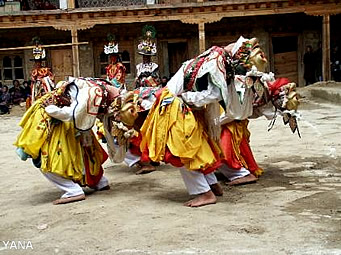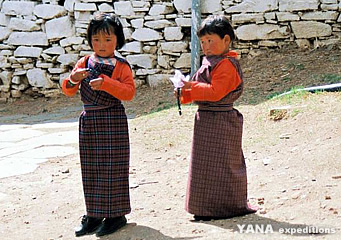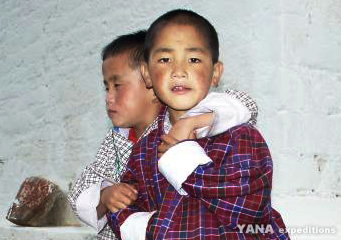| Bhutanese
Traditional Dresses |
 |
Bhutan Culture National Dress |
 |
Bhutan Information |
|
|
 |
|
Pesar
for children
|
 |
A
group of children enter the Paro Rinpung Dzong, giggling and pulling at
each other.
Most
of the children, especially girls, were wearing the hand woven pesar
(new design) kiras.
"I
am wearing the pesar kira for the first time," said Dema, a Class VI student.
"I used to wear the machine made kira or the plain mathra for the tshechu."
The pesar
kira appears to be the most popular wear among children under 16 years
at the Paro tshechu.
Sedey,
also a Class VI student, said her mother wove her a pesar kira especially
for the Tshechu. |
|
 |
On
the fourth day, two of the atsaras appear as 'boe', the laymen,
wearing gho. "They represent the two important saints, and signifies
that the saints visit the tshechu on that day and only those who are pious
will recognise them," said Kinley.
Women
who have problems conceiving should approach atsaras few days before the
tshechu and offer a bowl of rice and an egg along with nyendar (monetary
offering) , according to Kinley.
"After
the tshechu, if the egg which is kept in the Ney khang has a mark
or a colour on it, it symbolise the live and death of that child," he said. |
|
 |
On
the last day, the atsaras also
appear as women, played around with men and acted like they have given
birth to bring merit to infertile women. "The child believed to be born
with the blessings of an atsara is usually named Goem, meaning
guest," said Kinley.
Among
the adults few wore the pesar kira. Kira without designs, mostly mathra
and pangtse, was their choice of wear.
"Plain kiras worn with matching wonju and tego look much better than
the colourful ones," said Tshering Dema, a housewife. Another said that
it was not the design but the neatness and comfort that mattered. |
|
 |
"Pesar is considered special and usually worn on the last day of the tshechu,"
said a 56-year-old woman from Punakha. "More people attend the tshechu
on the last day," she said.
Among
the men, the bura lungsem and aikapur weave were the popular wear.
| Contributed
by Kesang Dema, KUENSEL, Bhutan's National Newspaper 2006 |
 |
| Information on Bhutan |
 |
|






